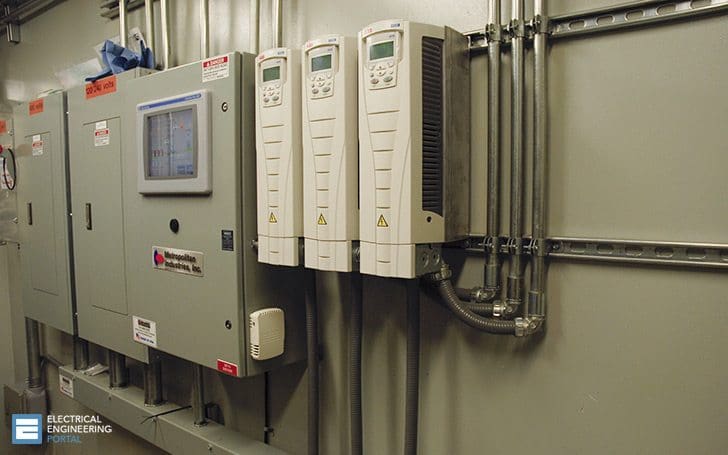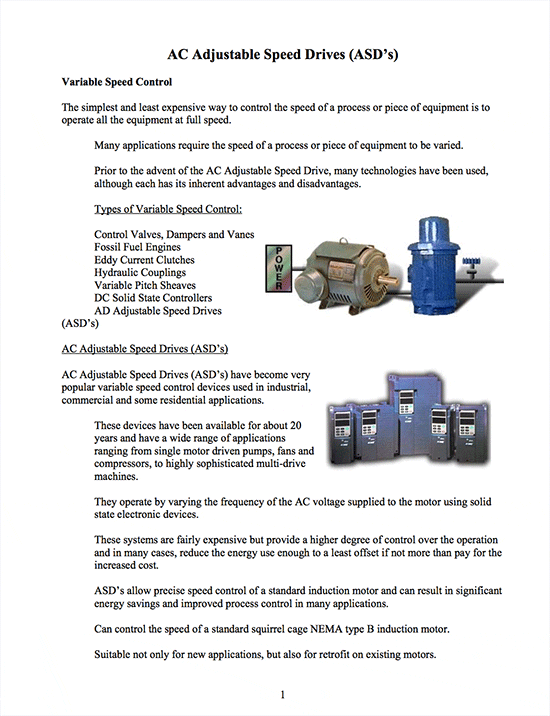
Types of AC ASD’s
There are three different types of Adjustable Speed Drives (ASDs) on the market that primarily differ in the type of rectification they use to convert AC to DC and back to AC.
- VVI – Variable Voltage Input
- CSI – Current Source Input
- PWM – Pulse Width Modulated
These drives take the AC input voltage and frequency, covert it to DC using rectifiers, then convert it back to AC in an invertor which changes the voltage and frequency.
Variable Voltage Input (VVI)
The VVI is the oldest AC drive technology and was the first AC drive to gain acceptance in the industrial market.
- The VVI is sometimes called a “six-step drive” due to the shape of the voltage waveform it sends to the motor.
- VVI drives are fairly economical between 25 and 150 horsepower for ranges of speed reduction from 15 to 100% (about 10 to 60 Hertz).
- These drives are also used widely on specialty high speed applications (400 to 3000 Hertz).
Advantages
- Good speed range
- Multiple motor control from one unit
- Simple control regulator
Disadvantages
- Power Factor decreases with decreasing speed
- Poor ride through ability for low input voltage
- Generates significant output harmonics
- Low Speed Motor Cogging (shaft pulsing/jerky motion)
- Requires Isolation Transformer on Input Side
| Title: | Adjustable Speed Drives Tutorial – PAControl |
| Format: | |
| Size: | 738 KB |
| Pages: | 13 |
| Download: | Right here | Video Courses | Membership | Download Updates |



Load load option time limit.ple remove
i am a electrical engineer so i wanna study new technology and developing my country and own.
good